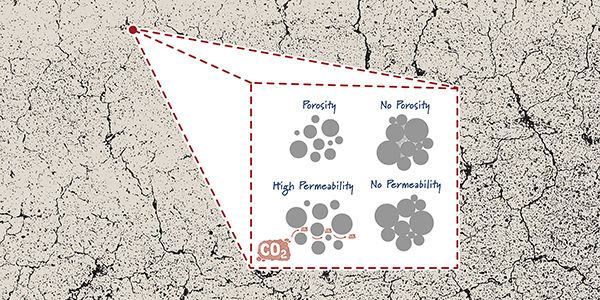3. Tiny voids, lots of CO2 storage

In order to get captured CO2 back into the ground, all parts of the carbon management supply chain need to work together. One important aspect is access to pore space.
- The newest class of CO2 storage wells, Class VI, was developed for injection of CO2 into the porous space between the mineral grains of deep rock formations for long-term sequestration – this is known as pore space.
In order for CO2 to be permanently stored, three key elements must be present at the site:
- Porosity – tiny voids (pores) in the rock where CO2 can be stored;
- Permeability – connectedness of the pores; and
- Caprock – an impermeable rock layer overlaying the injection site that keeps sequestered CO2 from escaping.
What’s clear: One of the main regulatory challenges with carbon storage is access to federal pore space. While the bipartisan infrastructure law was an important step in furthering innovative carbon capture technologies, additional clarity is needed before federal pore space is ready to use.
Plug in: Our CCUS Policy Analyst Grant Cummings dives deeper into pore space issues.
|